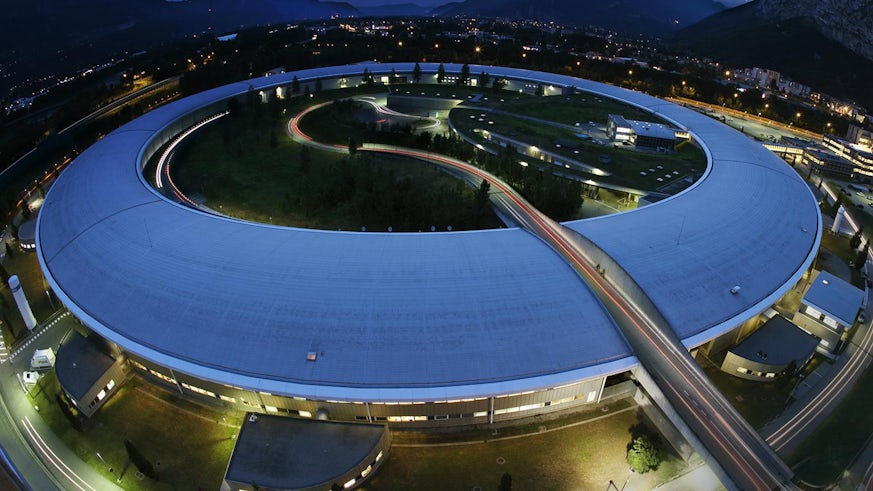Paving the way for more efficient solar cell devices
7 November 2016

A team of university researchers from Cardiff, Cambridge, Sheffield, and MIST in Abu Dhabi have been working with the ESRF (European Synchrotron Radiation Facility) on a new technique which paves the way for a better understanding of the links between crystal structure and morphology of the perovskite photo-active layer employed in third-generation solar cells.
The team includes Professor Emyr Macdonald from the School of Physics and Astronomy, and Cardiff PhD graduate, Dr Samuele Lilliu. A precis of their paper has been published on the ESRF homepage and a summary is online in the ESRF Spotlight on Science.
At present, the photovoltaic industry is dominated by crystalline silicon technology. Over the last twenty years new photovoltaic technologies have begun to compete with silicon photovoltaic technology. The first perovskite solar cell was fabricated in 2009 and this technology has progressed rapidly with solar cells now achieving a 22.1% power conversion efficiency. This suggests that perovskites could eventually replace standard crystalline silicon solar cells.
The research team, collaborating with the ESRF, have taken a new approach to investigate the crystal structure and morphology of perovskite films. This new technique employs a highly-focussed synchrotron X-ray beam at beamline to raster scan an X-ray ‘nanobeam’ across a sample, and thus combine real-space imaging with sub-nanoscale structural information from XRD. This allowed single perovskite grains buried within a complex, polycrystalline film to be selectively isolated and structurally characterised.
The ESRF is the world's most intense X-ray source and a centre of excellence for fundamental and innovation-driven research in condensed and living matter science. Located in Grenoble, France, the ESRF is the most intense source of synchrotron-generated light, producing X-rays 100 billion times brighter than the X-rays used in hospitals. These X-rays, endowed with exceptional properties, are produced at the ESRF by the high energy electrons that race around the storage ring, a circular tunnel measuring 844 metres in circumference. Scientists from around the world visit Grenoble to access the highly specialised experimental stations, called “beamlines", which are equipped with state-of-the-art instrumentation.
With nXRD, the team were able to perform grain segmentation and extract the lateral size, strain and orientation of individual perovskite platelets. The technique was employed to determine information such as surface coverage and grain statistics from perovskite films that were spin-coated on substrates held at different temperatures and subsequently employed in the fabrication of highly performing solar cells. They conclude that such films can be used to create solar cell devices having improved light harvesting abilities and thus enhanced power conversion efficiency.
Professor Macdonald said: “This is a significant piece of work which helps us understand and develop new low-cost materials for efficient large-area solar cells. We are now looking forward to seeing if we can take this research further.”
The paper, Mapping Morphological and Structural Properties of Lead Halide Perovskites by Scanning Nanofocus XRD (DOI: 10.1002/adfm.201603446) , is published online in Advanced Functional Materials and is open access.